The Best Car Speakers to Pump Up Your Jams

A surprising number of modern vehicles still don’t come with the best car speakers, since it’s an invisible way for manufacturers to save money. Audio upgrades, which can be hundreds or even thousands of dollars, are one of the most profitable options when ordering a new car. And older vehicles and used cars may either have come with basic stereos, or have had unknown and maybe mismatched speakers installed by a previous owner.
Thankfully, you can upgrade to the best car speakers available, many of which are direct replacements in the original size, so you don’t have to worry about complicated wiring, getting a new head unit or even adding an amplifier to your car. This is especially important as many new vehicles now have complex infotainment systems, which unless you’re in a high end car or one with an optional audio package, probably come with very cheap, basic speakers.
If you like what you hear and want to upgrade more after installing your new car speakers, you can either replace them, add more, or continue to build out with something like a subwoofer for extra bass. For our picks, we’ve concentrated on the affordable end of the spectrum, with good speakers from reputable brands that will give you noticeably better sound without costing a lot.
When shopping for replacement car speakers, make sure you’re getting the correct size speakers for your specific car. Otherwise, you may need to look at getting a custom installation done. Our recommendations for this list are intended to be OE replacement speakers, something you could do in your own garage if you have a bit of knowledge with wiring and how stereo systems work. It’s a job almost anyone can do, but you will need some specialized tools and connectors (like a set of trim tools), and definitely some time if you haven’t done it before. See our Table of Contents for some information on getting started with installing new speakers yourself.
Table of contents
- 1. Editor's Pick: Pyle PL463BL Blue Label Three Way 4 x 6 Speakers
- 2. Best Mid-Range: JBL GTO629 Premium 6.5-Inch Co-Axial Speaker
- 3. BOSS Audio CH6530 Chaos Exxtreme
- 4. Rockford Fosgate Prime R169X2 6.0 x 9.0-Inch Full Range Coaxial Speaker
- 5. Alpine SPS-610 6.5-Inch 2-Way Type-S Series Coaxial Car Speakers
- 6. Kenwood KFC-1696PS 6.5 Inch 2 Way Car Speakers
- 7. Infinity PR6510CS 480W 6.5 Inch Primus Series
- 8. Cerwin Vega Mobile XED693
- How to Upgrade Your Car Speakers
- Choosing the Right Speakers
- Tools You Need
- Accessing Front Dash Speakers
- Accessing Door Speakers
- Accessing Rear Deck Speakers
- General Steps
- 1) Disconnect Your Battery
- 2) Removing the Factory Speaker
- 3) Install the New Speaker
- 4) Test the New Speaker
- 5) What About Components?
- Recent Updates:
1. Editor's Pick: Pyle PL463BL Blue Label Three Way 4 x 6 Speakers
Pyle offers affordable options for replacement car speakers in a variety of sizes and speaker system classes. You can even choose the speakers' maximum output power so you can get the exact ones you want. Available sizes include 4.0 x 6.0 inches, 4.0 inches, 5.25 inches, 6.0 x 9.0 inches, and 6.5 inches.
The 4.0 x 6.0-inch speakers are three-way and have a maximum output power of 240 watts. They're triaxial speaker systems, with a woofer that features a blue poly injection cone to enhance stiffness, while the one-inch ASV voice coil is designed to handle high-wattage, high-temperature situations. As a three-way speaker system, it features a one-inch neodymium film dome midrange and a 0.75-inch piezo tweeter. The result is smooth, loud, and detailed sound for each pair. They are low impedance, so the four-ohm component speaker compensates for undersized wiring often found in modern cars, helping you make the most out of every watt the stereo can deliver.
The four-inch speakers are two-way with a maximum output power of 180 watts, a 20-ounce magnet structure, and a 0.5-inch neodymium film dome tweeter and sharp frequency response. It also has a 4.0-ohm impedance and a 0.75-inch high-temperature ASV voice coil. They provide up to 90 watts RMS (root mean Square) or 180 watts peak power.
If your car takes 5.25-inch speakers, Pyle's offering is three-way with an output power of 100 watts RMS or 200 watts peak. They also feature a 20-ounce magnet structure, a 0.5-inch neodymium film dome tweeter, and are 4.0-ohm impedance. The ASV is a one-inch unit.
Four-way speakers are available as 6.0 x 9.0-inch speakers with a 50-ounce magnet structure and a 1.0-inch film dome midrange for sharp frequency response. Also, 4.0-ohm impedance, the 6.0 x 9.0-inch speakers have a 1.25-inch ASV voice coil. They provide up to 200 watts RMS or 400 watts peak power.
Lastly, the 6.5-inch speakers Pyle offers are three-way triaxial speakers with 360 watts of peak power handling. They feature a one-inch ASV coil, 4.0-ohm impedance, one-inch neodymium film dome midrange and a 0.75-inch piezo tweeter.
Pyle's speakers are an affordable, cost-efficient option to upgrade your car's factory stereo.
Pros | Variety of sizes, power outputs, speaker system classes, affordable |
Cons | Good, not great sound quality |
2. Best Mid-Range: JBL GTO629 Premium 6.5-Inch Co-Axial Speaker
For decades, JBL has established itself in the home audio industry, and now its engineers create high-quality speakers for automotive use. The 6.5-inch GTO Series two-way component system is rated at 90 watts RMS (root mean square) each, or 180 watts per pair. They feature carbon-injected cone material with patented Plus One woofer-cone technology, helping increase output with no extra power.
These speakers have vented magnet assemblies on the woofer/midrange driver, helping keep the voice coil nice and cool. This increases reliability for greater power handling while helping eliminate power compression that can distort a speaker's sound.
Designed to replace factory speakers, the GTO Series have 3.0-ohm voice coils that allow compensation for added resistance from thin factory speaker wire.
Pros | Patented Plus One woofer-cone technology, vented magnet assemblies, three-ohm voice coils, crossover filters |
Cons | Price |
3. BOSS Audio CH6530 Chaos Exxtreme
Another affordable option for speaker upgrades comes from BOSS Audio's Chaos Exxtreme lineup in 5.25-inch and 6.5-inch sizing. The 5.25-inch speakers are available in two-way or three-way form, while the 6.5-inch speakers are offered in two-way, two-way shallow mount, three-way, and as a component set.
The 5.25-inch, two-way speakers have a 4.0-ohm impedance with a frequency response range of 100Hz to 1.0kHz. Each speaker features a 1.0-inch polyimide dome midrange and 1.0-inch aluminum voice coil, while the woofer cone is constructed by poly injection. Peak power is at 100 watts x 2.0 for 200 watts. The 5.25-inch, three-way units add one tweeter to each speaker and have peak power of 112.5 watts x 2.0 (225 watts).
The 6.5-inch two-way speakers have similar specifications as the 5.25-inch units, except for peak power of 125 watts x 2 for 250 watts. The shallow-mount versions require 1.8 inches of mounting depth, compared to 2.1 inches for the standard two-way speakers. The three-way version adds a tweeter to each speaker, with peak power at 150 watts x 2.0 (300 watts).
Lastly, the component set comes with two 6.5-inch speakers, two tweeters, two crossovers, and grills. They have peak power of 112.5 watts x 2.0 (225 watts). When purchased from Amazon, the BOSS Audio speakers come with a three-year Platinum Online dealer warranty.
Pros | Three-year dealer warranty, variety of sizes and power outputs, price |
Cons | Don't expect high-end, premium sound for the price |
4. Rockford Fosgate Prime R169X2 6.0 x 9.0-Inch Full Range Coaxial Speaker
One of the most well-known brands in the car audio industry is Rockford Fosgate, and the company's Prime family of speakers is a great choice as a mid-range option. The lineup includes six sizes from 4.0 inches to 6.0 x 9.0 inches.
The smallest Rockford Fosgate Prime 4.0-inch speaker is a two-way full-range speaker at 30 watts RMS (root mean square), and is designed to be a factory replacement option. The speakers feature a vacuum polypropylene cone, rubber surround, stamped steel basket, silk dome flush mounted tweeter, and integrated tweeter crossover. They are 4.0-ohm impedance with a frequency response range of 100Hz to 20kHz.
The 5.25-inch speakers are two-way units rated at 40 watts RMS and are similar to the 4.0-inch speakers with a vacuum polypropylene cone, rubber surround, silk dome flush mounted tweeter, and integrated tweeter crossover. They are also rated at 4.0 ohms impedance.
The 6.0 x 8.0-inch speakers are also two-way and rated at 55 watts RMS, while the 6.0 x 9.0-inch speakers are rated at 65 watts RMS. The Prime 6.5-inch speakers are three-way full-range units with 4 ohms impedance, frequency response range of 52Hz to 20kHz, and are rated at 45 watts RMS. Lastly, the 6.75-inch speakers are rated at 45 watts RMS.
Pros | Well-respected car audio manufacturer, diverse lineup, decent pricing, factory replacements |
Cons | Aren't designed to be powerful |
5. Alpine SPS-610 6.5-Inch 2-Way Type-S Series Coaxial Car Speakers
Part of Alpine's Type-S speaker lineup, the SPS-610 is a competitively priced OE replacement speaker. The 6.5-inch two-way coaxial units feature a 1.0-inch wide-range silk dome along with an optimized magnet circuit that drives CCA wire and soft silk diaphragm with high efficiency. The swivel tweeter offers more than 10.0 degrees of movement for proper sound tuning.
Other features include a butyl rubber surround for natural response and stability, as well as a progressive Aramid fiber spider with an optimized shape to provide deep bass, linearity, and break-up mode control at high dive levels.
The SPS-610 offers 80 watts RMS (root meant square) power or 240 watts peak power. These speakers also use an HD polymer frame for improved sound and installation.
Pros | Good performance at competitive price, swivel tweeter, Alpine sound quality |
Cons | Little bass |
6. Kenwood KFC-1696PS 6.5 Inch 2 Way Car Speakers
Kenwood's two-way speakers replace their popular and long-running Kenwood KFC-1695PS, keeping all the good and improving the bad. They have the same 6.5-inch diameter, 320-watt output, and construction but in a new lower-profile 1.875-inch mounting depth design, with the tweeter recessed fully to fit even tighter spaces. The woofer cone is now polypropylene instead of paper, and the tweeter is larger at 1.1875 inches.
Other improvements include a yoke and plate design that Kenwood says dissipates heat better; a new, more durable, and better-sounding woofer damper shape; and less material in the frame to enhance bass response, which was the chief complaint with the KFC-1695PS. Continuous output is also up from 75 watts to 100 watts at 4 ohms. However, the 320-watt rating is for the pair, not per speaker, which has 160 watts or peak output individually. Frequency response is unchanged at 75Hz to 20kHz.
They are sensitive to proper mounting, but the Kenwood KFC-1696PS will give you a huge bang for the buck when you get them right.
Pros | Price, low profile design, three-way coaxial, ceramic super tweeter |
Cons | Bass is still low, 100 watts continuous output |
7. Infinity PR6510CS 480W 6.5 Inch Primus Series
The Infinity PR6500CS Primus is a mid-range option, handling 80 watts RMS power or 320 watts peak power. These 6.5-inch two-way component system speakers feature the company's PlusOne woofer cones, which increase cone radiating area over conventional speakers of the same size. The result is speakers that play louder with smaller amplifiers, delivering increased bass output. They are 3.0-ohm impedance to compensate for thin-gauge factory speaker wiring.
The edge-driven textile dome tweeter offers increased power handling and reduced distortion, adding clarity to the mid/woofer driver. This particular product comes with separate woofer and tweeter modules, along with an external crossover. Infinity even includes a pair of Alphasonik earbuds with the set.
Pros | Vented motor assemblies, PlusOne woofer cones, component speaker system |
Cons | May need custom installation |
8. Cerwin Vega Mobile XED693
An affordable 6.0 x 9.0-inch speaker comes from Cerwin Vega with the XED693. These three-way coaxial speakers feature a curvilinear poly cone, butyl rubber surround, a balanced metal dome with a 2.5-inch midrange, a balanced piezo metal dome 0.75-inch CV tweeter, and a black coat stamped steel basket. They are rated at 300 watts max power and have a frequency response range of 50Hz to 18kHz.
For the price, these are some of the best 6 x 9-inch speakers you can buy and work great as an OE replacement with the stock head unit.
Pros | Price, three-way coaxial, piezo tweeter |
Cons | Not great with high powered systems |
How to Upgrade Your Car Speakers
If you’re not entirely satisfied with the performance of the factory speakers in your car, you might be glad to hear that upgrading them isn’t a challenging task for most vehicles. More importantly, there are plenty of aftermarket speakers that are affordable, and they’re typically much cheaper than an optional factory stereo package.
Unfortunately, not all vehicles use the same speaker size and some are more difficult than others to upgrade. The goal of this guide is to give you a general overview on what to look for if you’re interested in upgrading your car speakers, along with some tips, and basic installation steps. One of the hardest parts will be accessing your factory speakers, since all vehicles are different when it comes to disassembly.
Choosing the Right Speakers
There are a few things to consider when shopping for replacement car speakers. First, you will want to see what size speakers your car has from the factory. To make the install process as easy and seamless as possible, you’ll want to purchase the same size speakers. There’s a good chance you can find out the size of your factory speakers from the store you are purchasing new speakers from, or if you’re fully committed to replacing them, simply measure the speakers yourself.
The next decision you have to make is whether you’re purchasing component or coaxial replacement speakers. Generally speaking, component setups will offer better sound than coaxial speakers, but they are more expensive and may require a more custom installation. Most of the time, coaxial speakers will be direct OE replacements, so long as you match up the size.
If you aren’t planning on installing a new head unit, then you need to make sure the speakers you are purchasing can handle the power from your factory unit. You can also install a separate amplifier to power those speakers if you’re looking to really improve the sound inside your cabin. When shopping for speakers, you will normally see a “power handling” specification in “RMS” and “peak.” RMS stands for root-mean-square and that’s the value you want to pay attention to, instead of peak. That’s because RMS refers to the continuous power the speaker can handle, while peak is a reference to the maximum power level a speaker can use in short bursts.
Another specification to look for is a speaker’s sensitivity, often known as SPL. It’s rated in decibels and refers to how much power a speaker needs to put out a given volume. What you need to know is that speakers with higher sensitivity require less power, so if you’re using a factory head unit that doesn’t provide a lot of power, pick up a set of high sensitivity speakers.
Doing a complete sound system upgrade in your vehicle is a bit more complex than just swapping out the speakers. You may need to purchase an aftermarket head unit, external amplifier, and even a subwoofer if you want a complete system upgrade. This guide will focus on just swapping out the factory speakers in your car, which is a good starting point for upgrading your stereo.
Tools You Need
As we mentioned earlier, all vehicles will have a different disassembly process when it comes to accessing the factory speakers. The following tools are a good starting point and you should have them organized and ready to go before starting the process.
- Allen wrenches
- Crimping tools
- Drill with bits
- Electrical tape
- File
- Flat head screwdriver
- Panel popper
- Phillips screwdriver
- Socket wrench
- Soldering iron and solder
- Torx drivers and bits
- Wire cutter/wire stripper
Accessing Front Dash Speakers
If your car has front dash speakers, those are typically fairly easy to access. Normally you can remove the speaker grille to access the speaker itself, although you may need a 90-degree screwdriver to access the screws of the speaker if it is near the windshield.
Be careful when removing the speaker grille to not damage or scratch your dash. It’s best to use a panel popper to remove the grille. If you noticed that the grille isn’t coming off very easily, stop and check if there are screws securing it in place from below. In that case, you may need to remove the entire dash in order to access the speakers.
Accessing Door Speakers
Door speakers are likely the speakers you’re familiar with. They’re located in the door panel and are also fairly easy to replace, depending on your vehicle. Some cars make it tricky to remove the door panel and access the speakers, while others make it a very straightforward job. If you’re lucky, your car may allow you to just remove the speaker grilles from the outside of the door panel to access the door speaker.
If you need to remove the door panel to access the speakers, use a panel popper or a flat head screwdriver to carefully pop it off. Some door panels may be more complex to remove than others, and make sure you check for any plugs that need to be disconnected. A typical door panel has switches for your power doors and windows, so there are likely a couple disconnections you have to make before you can safely remove the door panel.
Once you are able to access the speaker, remove the grille if necessary then head over to the “General Steps” section on how to replace the speaker.
Accessing Rear Deck Speakers
Rear deck speakers tend to be the most difficult to access. If you’re lucky, some vehicles will be like dash speakers, where you simply pop off the grille and can access the screws to remove the speaker. Other cars may need you to access them from your trunk, or remove the entire back seat and rear trim pieces.
Like accessing dash and door speakers, take care if you have to remove certain panels in order to access your rear deck speakers. Look for connectors that need to be disconnected. Once you’re able to access the speakers head over to our “General Steps” section.
General Steps
The following are general steps when it comes to replacing your car’s speakers. Again, specific steps may differ depending on your vehicle, but this should give you a broad idea of what’s necessary to swap out your factory speakers.
1) Disconnect Your Battery
Before you begin, you will want to disconnect the negative terminal from your battery. Since the doors of your car will be opened throughout the install process, you don’t want to drain the battery from your guard. More importantly, disconnecting your battery will prevent short circuits from occurring while you’re working with wiring.
2) Removing the Factory Speaker
We’re assuming at this point you have gained access to your speakers, whether they’re in the dash, door, or rear deck. Most speakers will be held on by screws, so simply unscrew the speaker. Before pulling the speaker out entirely, carefully unplug whatever connector is behind it.
3) Install the New Speaker
If your new speakers came with a new harness, plug that into your new speaker’s terminals. If not, make the proper connections so that you can send an audio signal to your speakers.
4) Test the New Speaker
Before you tighten the new speaker in place, you may want to give it a quick test to make sure it’s working. If you’re installing coaxial speakers, this is basically all you have to do before reassembling your dash, door, or rear deck.
5) What About Components?
If you’re installing a component set, you will likely have to install a crossover and find a location to mount your separate tweeter. That normally involves drilling and cutting either into your door panel or even A-pillar, if you wish to mount the tweeter there. This is a more custom process, which is why coaxial replacements are recommended for direct OE replacement upgrades.
Recent Updates:
January 17, 2023: Updated images.
December 28, 2022: Updated images and product links.
December 1, 2022: Removed Polk DB652 UltraMarine, unavailable; updated product links.
December 22, 2021: Replaced discontinued Kenwood KFC-1695PS with Kenwood KFC-1696PS. Updated photos and descriptions of existing recommendations.
November 24, 2021: Replaced discontinued Polk DB651 with DB652.
We are committed to finding, researching, and recommending the best products. We earn commissions from purchases you make using the retail links in our product reviews. Learn more about how this works.
Photo credit: Patcharapa / Shutterstock.com

Jason Siu began his career in automotive journalism in 2003 with Modified Magazine, a property previously held by VerticalScope. As the West Coast Editor, he played a pivotal role while also extending his expertise to Modified Luxury & Exotics and Modified Mustangs. Beyond his editorial work, Jason authored two notable Cartech books. His tenure at AutoGuide.com saw him immersed in the daily news cycle, yet his passion for hands-on evaluation led him to focus on testing and product reviews, offering well-rounded recommendations to AutoGuide readers. Currently, as the Content Director for VerticalScope, Jason spearheads the content strategy for an array of online publications, a role that has him at the helm of ensuring quality and consistency across the board.
More by Jason Siu



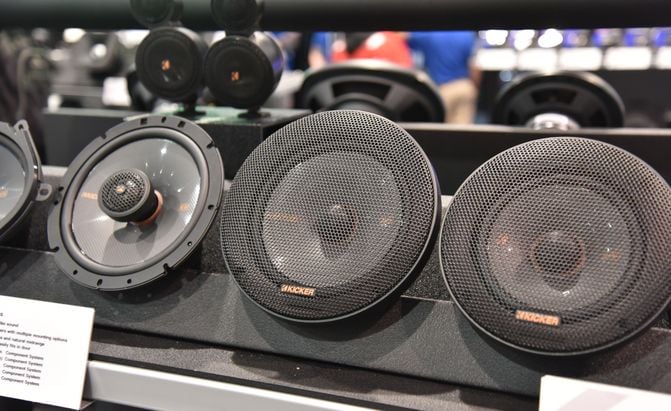























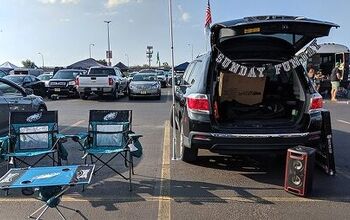
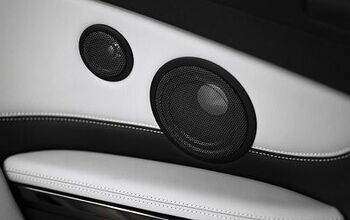
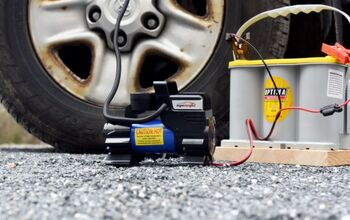
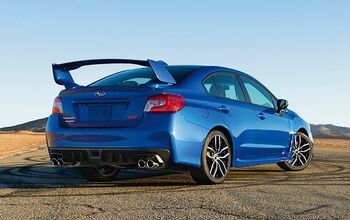
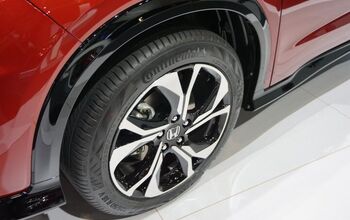

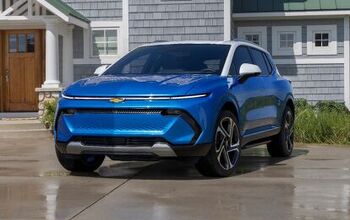




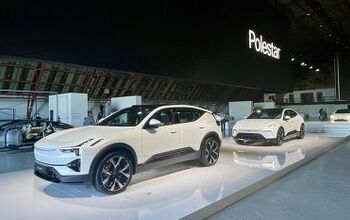
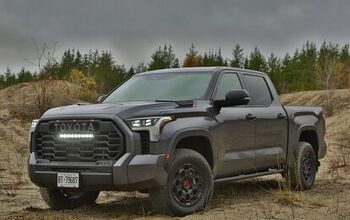

Comments
Join the conversation